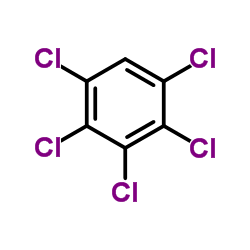arochlor 1221

arochlor 1221 structure
|
Common Name | arochlor 1221 | ||
|---|---|---|---|---|
| CAS Number | 11104-28-2 | Molecular Weight | 250.337 | |
| Density | 1.7±0.1 g/cm3 | Boiling Point | 277.0±0.0 °C at 760 mmHg | |
| Molecular Formula | C6HCl5 | Melting Point | 42.93°C (estimate) | |
| MSDS | Chinese USA | Flash Point | 131.6±23.3 °C | |
| Symbol |



GHS07, GHS08, GHS09 |
Signal Word | Danger | |
|
Effects of neonatal polychlorinated biphenyl exposure on female sexual behavior.
Physiol. Behav. 74(3) , 363-70, (2001) The effects of polychlorinated biphenyls (PCBs) on development and reproduction are well documented. However, very little is known about the effects of PCBs on sexual behavior. In this study, we examined the effects of two commercial PCB mixtures, Aroclor 122... |
|
|
Differential effects of aroclors and DDT on growth factor gene expression and receptor tyrosine kinase activity in human breast epithelial cells.
Adv. Exp. Med. Biol. 407 , 295-302, (1997)
|
|
|
Characterization of multiple novel aerobic polychlorinated biphenyl (PCB)-utilizing bacterial strains indigenous to contaminated tropical African soils.
Biodegradation 19(1) , 145-59, (2008) Contaminated sites in Lagos, Nigeria were screened for the presence of chlorobiphenyl-degrading bacteria. The technique of continual enrichment on Askarel fluid yielded bacterial isolates able to utilize dichlorobiphenyls (diCBs) as growth substrates and six ... |
|
|
Biodegradation of Aroclor 1221 type PCBs in sewage wastewater.
Bull. Environ. Contam. Toxicol. 27(5) , 695-703, (1981)
|
|
|
Isolation and characterization of a biphenyl-utilizing psychrotrophic bacterium, Hydrogenophaga taeniospiralis IA3-A, that cometabolize dichlorobiphenyls and polychlorinated biphenyl congeners in Aroclor 1221.
J. Basic Microbiol. 46(2) , 94-107, (2006) A psychrotrophic bacterium isolated from polychlorinated biphenyls (PCBs)-contaminated soil grew on biphenyl as sole carbon and energy source, and actively cometabolized PCBs at low temperature. Analysis of cellular fatty acids indicate that the bacterium is ... |
|
|
Endocrine disruptive effects of polychlorinated biphenyls on the thyroid gland in female rats.
Tohoku J. Exp. Med. 206(4) , 327-32, (2005) Polychlorinated biphenyls (PCBs) are persistent environmental pollutants. Aroclor 1221 (A1221) and Aroclor 1254 (A1254) are commercial PCB mixtures with low and high number of chlorination, respectively. We have comparatively investigated effects of A1221 and... |
|
|
Comparative evaluation of hepatotoxic and nephrotoxic effects of aroclors 1221 and 1254 in female rats.
Cell Biochem. Funct. 25(2) , 167-72, (2007) Polychlorinated biphenyls (PCBs) are persistent environmental pollutants. This study compared effects of two PCB mixtures, Aroclors 1221 (A1221) and 1254 (A1254) on serum levels of aspartate aminotransferase (AST), alanine aminotransferase (ALT), alkaline pho... |
|
|
Evaluation of estrogenic effects of polychlorinated biphenyls and organochlorinated pesticides using immature rat uterotrophic assay.
Hum. Exp. Toxicol. 32(5) , 476-82, (2013) In this study, we investigated the effects of polychlorinated biphenyls (PCBs) and organochlorinated pesticides on the serum levels of luteinising hormone (LH), follicle stimulating hormone (FSH) and weights and histomorphometry of uterine tissue in immature ... |
|
|
Toxicity of PCBs (Aroclor-1221, 1254) to embryos and larvae of Xenopus laevis.
Bull. Environ. Contam. Toxicol. 73(2) , 379-84, (2004)
|
|
|
Aerobic biodegradation of biphenyl and polychlorinated biphenyls by Arctic soil microorganisms.
Appl. Environ. Microbiol. 63(9) , 3378-84, (1997) We examined the degradation of biphenyl and the commercial polychlorinated biphenyl (PCB) mixture Aroclor 1221 by indigenous Arctic soil microorganisms to assess both the response of the soil microflora to PCB pollution and the potential of the microflora for... |